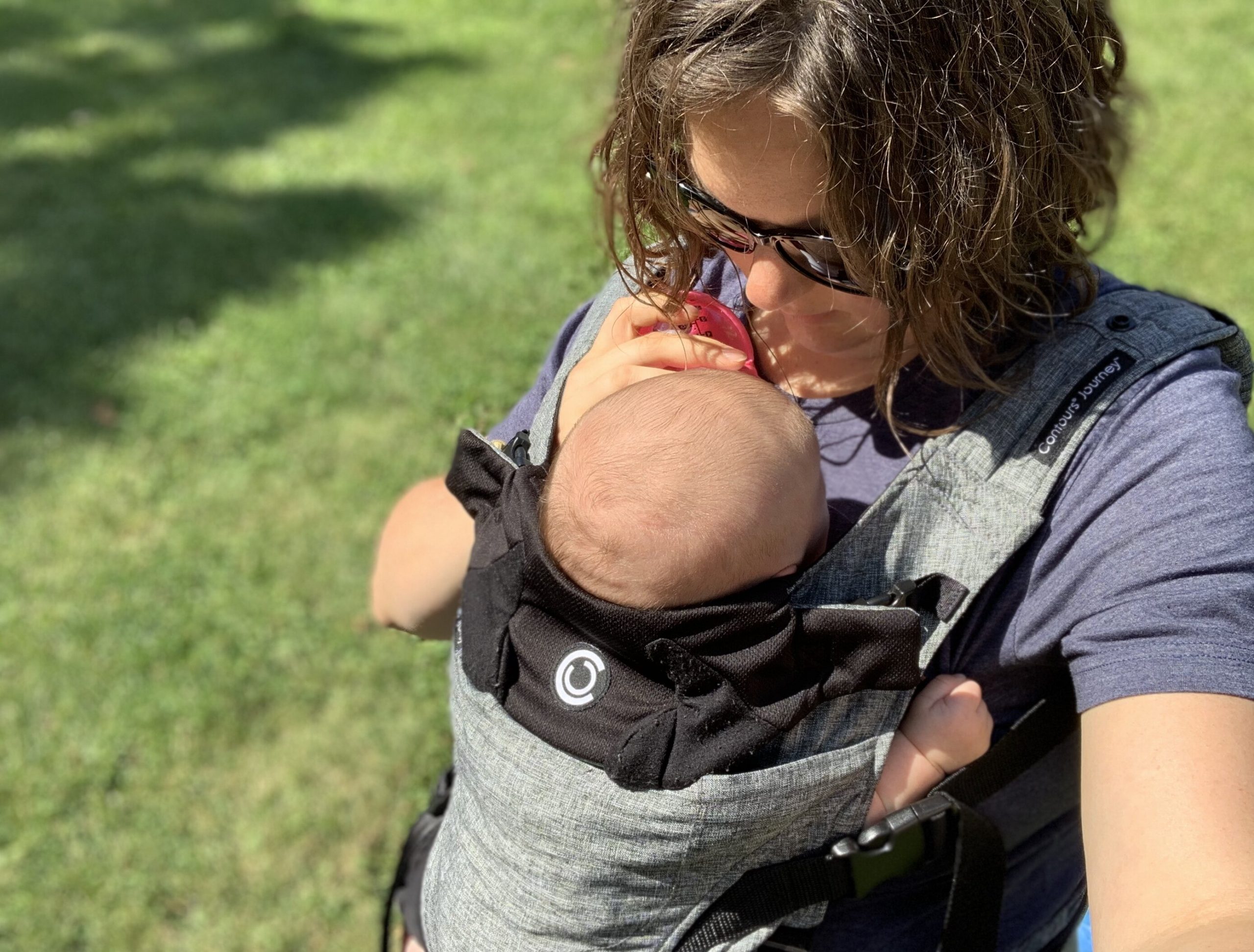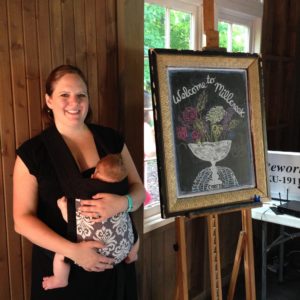Nursing in a baby carrier doesn’t have to be complicated! Check out these methods and tips on feeding in a carrier.

In honor of World Breastfeeding Week, I’m sharing tips for feeding in a carrier. Not only is breastfeeding possible in a carrier, but also bottle feeding and tube feeding. While feeding in a carrier isn’t always completely hands-free it can free up one hand to help you handle the rest of your busy life!
At the very first babywearing meeting I attended when my oldest was 3 months old, the leaders demonstrated how to feed in a ring sling. My mind was blown! It was such a game-changer for me, even with one child, to be able to nurse on the go. Since then, I have learned to nurse in a variety of carriers and at a variety of stages in the lives of my babies. I have also had the opportunity to learn from friends who have fed their little ones while babywearing through bottle feeding and tube feeding.
A friend’s youngest of 4 is currently fed through a NJ tube 24 hours a day. She has shared that babywearing can be a lifesaver when out and about as she juggles 3 other children and needs to keep her baby connected to her feeding source. Not only does she benefit from the practicality of it, but wearing her while tube feeding gives her a close connection, even when not being able to nurse her as she did her older kids.
I have several friends who have fed their children or nanny children by bottle using breastmilk or formula while babywearing. It gives them the opportunity to juggle other children and chores, navigate being out and about, and develop a close connection through the bonds of babywearing.
As with any babywearing situation, it is important to ensure a baby’s airway is always clear and monitored. This means fabric should not cover the baby’s face and when the baby is not actively feeding, they should be returned to a high, tight, and upright position where the airway can be actively monitored by the wearer.
The number one recommendation regarding breastfeeding in a carrier is to become comfortable with nursing and babywearing separately before trying to put the two of them together. This isn’t a hard and fast rule as sometimes the needs of life can outweigh ideal recommendations; however, it makes putting them together a lot smoother when you are comfortable with each separately.
Methods
Ring sling: When using a ring sling to feed in, you can use a cradle carry or an upright carry. When using a cradle carry: loosen rings, turn the baby’s body to the cradle position, ensure baby’s back is straight and back and butt are in a checkmark position, ensure the edge of the fabric supports baby’s neck and fabric doesn’t cover the baby’s face, and when the baby is no longer actively feeding, move back to an upright position. When using an upright carry: loosen rings, lower baby to breast height for nursing or comfortable height for bottle feeding, tighten rings, and when baby is no longer actively feeding, move back to an upright position.
Meh Dai: Loosen knot, lower baby to a comfortable position, retie double knot, feed baby, and when baby is no longer actively feeding, move back to an upright position.
Buckle/SSC: Loosen shoulder straps, lower baby to a comfortable position, tighten for comfort, feed baby, and when baby is no longer actively feeding back to an upright position.
Woven Wrap: Feeding in a woven wrap may vary by carry, however in general you will loosen the knot, lower baby to a comfortable position, retie double knot, feed baby, and when baby is no longer actively feeding, move back to an upright position.
Stretchy Wrap: I do not suggest feeding in a stretchy wrap. Because a stretchy wrap is pre-tied before placing baby in, it is not practical to loosen and re-tighten easily without re-tying the whole carry. It is easy, however, to pop baby out of the stretchy wrap, push fabric to the side for breastfeeding or feed baby with a bottle, and then when baby is done, pop baby back in without needing to retie anything. Tube feeding, however, can be done in a stretchy wrap without any modifications.
With a little practice, you may find that feeding your little one in a carrier gives you a chance to feed your baby, feel the bond of babywearing and be at least partially hands-free to check off items on your to-do list!
Stephanie Hopkins is a contributing writer who is a Center for Babywearing Studies graduate. Follow her story at redbarnbasics.com.




